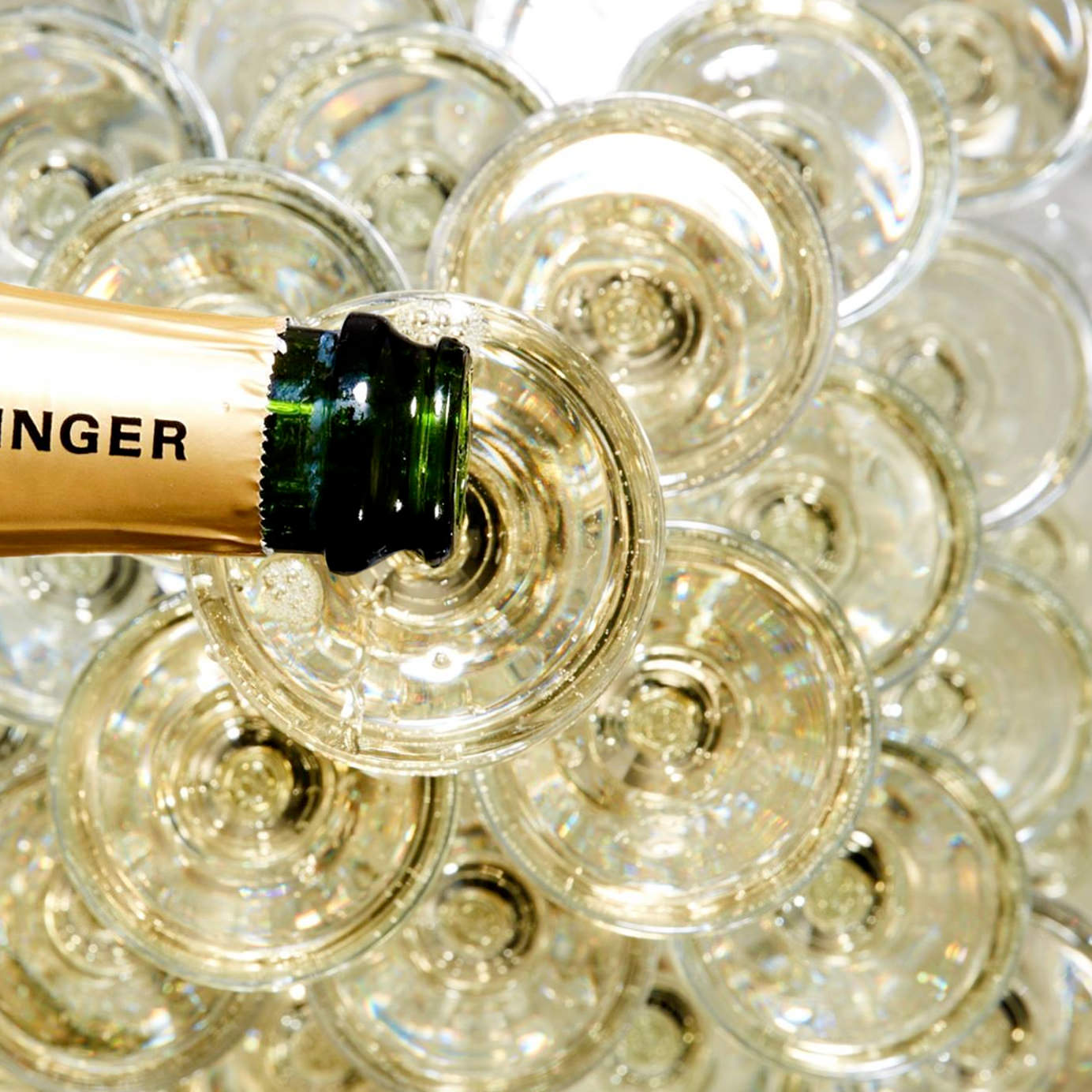A few months into my first sommelier job, our wine director made a grand announcement during a pre-shift meeting: “Today launches our Champagne magnum by-the-glass happy hour.” The service team oohed and aahed, and I started having phantom pains from soon-to-be sore, magnum-pouring arms.
I’m a proponent of more Champagne, always, but I was confused. If guests were only buying one glass of Champagne, did it really make a difference as to whether that glass came from a magnum or standard-sized bottle? What’s the big deal with Champagne magnums?
“The magnum bottle is the best bottle for Champagne,” Vitalie Taittinger, artistic director of Champagne Taittinger, says. “That’s where you have the best ratio between air and wine and where the aging potential will be at its best.”
Don't Miss A Drop
Get the latest in beer, wine, and cocktail culture sent straight to your inbox.It all comes down to oxygen-to-wine ratio. A magnum bottle holds 1.5 liters of wine, the equivalent of two standard-sized bottles. But while a magnum contains double the amount of Champagne as a 750-milliliter bottle, they both have similar-sized corks and mouth openings. Corks are watertight, but they aren’t completely airtight, so it is normal for a small amount of oxygen to enter the Champagne bottle.
“Given the exponential rate of oxygen seeping in through a cork, interacting with the wine, and consequently ‘aging’ said wine, a smaller ratio of cork to vino is definitely beneficial when you talk about prolonging the process of eventual oxidation,” Caleb Ganzer, wine director and managing partner of La Compagnie des Vins Surnaturels in New York, says.
This smaller ratio of oxygen to wine is a good thing because oxygen starts to break down wine as soon as it makes contact, diminishing crisp, fresh fruit notes and developing secondary notes like stewed fruit, nuts or mushrooms. A little bit of oxidation can be a good thing, adding complexity to a Champagne, but too much can ruin a bottle. Magnums therefore help to slow the oxidation process, preserving a wine for longer.
“Long-term, a wine will definitely taste fresher out of magnum as compared to the same wine in a 750 [-milliliter] format,” Ganzer says.
But if the biggest benefit of magnum bottles is really seen during Champagne’s aging process, why should bottle size matter for those of us who plan to drink our bottle now?
“Using a magnum for making a Champagne slows down the aging process, which is why magnums are always released later that a 750-milliliter bottle of the same vintage,” Laurent Fresnet, cellar master of Champagne Henriot, says. Therefore, magnums of Champagne on the market now may be from older vintages than their standard-sized equivalents, giving wine lovers the opportunity to experience aged Champagne without cellaring it for years.
Double the Champagne with more age and complexity? What’s not to love about magnums? Unfortunately, there is one caveat. Champagne magnums typically cost more than double the price of standard-sized bottles. While some wine drinkers might question the rationale of ponying up for a magnum rather than simply buying two 750s of the same Champagne, there’s a good reason for the increased price: the bottle itself.
“The bottle is bigger, so the cost of the final product is more important,” Taittinger says. Because the bottles contain double the amount of Champagne, the bottles themselves require thicker glass to withstand more pressure. They also necessitate more time, labor, storage space, and shipping costs.
What’s inside the bottle makes a difference in cost, too. For many, this makes the price entirely worthwhile. “Magnums are often aged longer or filled with a higher quality barrel selection at bottling, and thus can often contain better juice from the get-go,” Ganzer says.
If Champagnes from magnums are so great, why stop there? Double magnums, methuselahs, nebuchadnezzars — should we all start popping bigger and bigger bottles?
Yes and no. Some oxidation benefits Champagne, so bigger is not always better. And Champagnes poured out of exceptionally big bottles may take too long to age and won’t express the full character and complexity of the cuvée. Stick with magnums, which strike the perfect balance between drinkability and ageability. Your palate — and your sommelier’s biceps — will thank you.
Cover photo credit: Facebook/Taittinger USA
